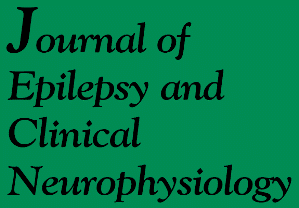Left and right cerebral hemispheres are morphologically similar, although they are functionally different. Focal EEG abnormalities should appear with an equal frequency in both of them, but the literature has reported a left predominance. We presented the first Latin American study on lateralization of focal EEG abnormalities. METHOD: We retrospectively studied 10,408 EEGs from April 2001 to April 2010. They were separated by age and gender to estimate the frequency of left-sided versus right-sided focal abnormalities (discharges or slow waves). Associated clinical features were also accessed. RESULTS: Discharges were more prevalent in left cerebral hemisphere, in temporal lobe, and a stronger lateralization was found among adults. Right-sided discharges occurred more in frontal lobe. Slow waves were also more prevalent in the left cerebral hemisphere and among adults. Among left-sided slow waves group, women were more prevalent. Contrarily, men were more observed among right-sided slow waves EEGs. Left-sided slow waves were more prevalent in temporal and parietal lobes. Contrarily, right-sided slow waves occurred more in frontal and occipital lobes. Epilepsy was the most frequent disease among the patients with focal discharges in both cerebral hemispheres. Right-sided slow waves were more associated to epilepsy, and left-sided slow waves were more associated to headache. CONCLUSION: There were significant differences between cerebral hemispheres on focal EEG abnormalities, considering lateralization, gender, age and clinical features. These results suggest a neurofuncional asymmetry between cerebral hemispheres which may be explained by different specificities, as well as by cerebral neuroplasticity.
lateralization; interictal EEG; spikes; sharp waves; slow waves



